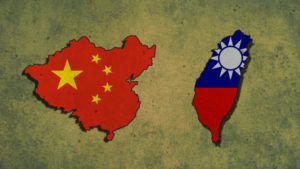Donald J. Trump now is ready to adhere to one of the more complicated elements of U.S. foreign relationships.
It’s called the One-China Policy, which recognizes only one China … and it’s not Taiwan.
Not long after being elected president, Trump took a phone call from Taiwan’s president and then declared the United States ought to rethink its decades-old policy that recognizes the People’s Republic of China.
Bad idea, you know? The conversation between a U.S. president-elect and the leader of Taiwan was the first that had occurred since the United States recognized the PRC as the “real” China.
Taiwan, China maintain complicated relationship
Taiwan is, in fact, a prosperous independent nation that broke away from the Chinese mainland at the end of a bloody civil war that erupted after World War II. Taiwan’s Nationalist government set up shop on Taiwan in 1949 and for three decades it was the recognized government of China.
That all changed dramatically in 1979 when the United States recognized the PRC, kicked out the Taiwanese ambassador. The United Nations booted Taiwan out, too, and welcomed the PRC.
Thus, the One-China Policy was born amid an interesting mix of economic and defense-related agreements that the United States still maintains with Taiwan. We trade with the Taiwanese, we pledge to protect them if the PRC decides to retake the island nation — but we do not recognize them diplomatically.
Trump spoke this week to Xi Jinping, the Chinese president, and reaffirmed out commitment to the policy that recognizes the PRC exclusively as the sole China.
As for Taiwan’s relationship with the PRC, that too, is a matter of delicate maneuvering. Taipei and Beijing allow travel between the countries; family members are allowed to communicate with each other.
Taiwan also believes in a “One China Policy,” but insists that the island nation — not the mainland — is the “real China.” Here’s the deal: Most of Taiwan’s inhabitants were born on the island and consider themselves to be “Taiwanese.”
The president, though, needs to settle down and stick with a policy that recognizes only one China. To do anything different is to insert the United States directly into the middle of a simmering dispute between China and Taiwan.
